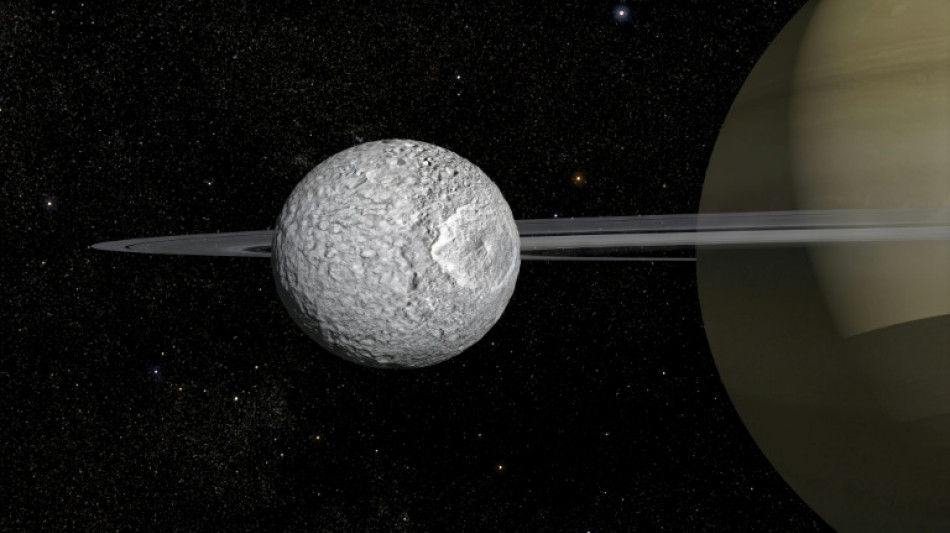
-
 Stocks retreat as tech bubble fears grow
Stocks retreat as tech bubble fears grow
-
Shein opens first permanent store amid heavy police presence

-
 West Indies edge New Zealand despite Santner brilliance
West Indies edge New Zealand despite Santner brilliance
-
French pair released by Iran await return home

-
 German factory orders up but outlook still muted
German factory orders up but outlook still muted
-
Death toll tops 100 as Philippines digs out after typhoon

-
 Attack on key city in Sudan's Kordofan region kills 40: UN
Attack on key city in Sudan's Kordofan region kills 40: UN
-
'No one could stop it': Sudanese describe mass rapes while fleeing El-Fasher

-
 Champagne and cheers across New York as Mamdani soars to victory
Champagne and cheers across New York as Mamdani soars to victory
-
Medieval tower collapse adds to Italy's workplace toll

-
 BMW boosts profitability despite China, tariff woes
BMW boosts profitability despite China, tariff woes
-
South Africa's Wiese wary of 'hurt' France before re-match

-
 Asian markets sink as tech bubble fears grow
Asian markets sink as tech bubble fears grow
-
Beyond limits: Croatian freediver's breathtaking record

-
 Tottenham supporting Udogie after alleged gun threat in London
Tottenham supporting Udogie after alleged gun threat in London
-
Thunder roll Clippers to stay unbeaten as SGA keeps streak alive

-
 In appeal, Australian mushroom murderer alleges 'miscarriage of justice'
In appeal, Australian mushroom murderer alleges 'miscarriage of justice'
-
Toyota hikes profit forecasts 'despite US tariffs'

-
 Typhoon death toll soars past 90 in the Philippines
Typhoon death toll soars past 90 in the Philippines
-
Ex-France lock Willemse challenges Meafou to become 'the bully'

-
 Ukrainians to honour sporting dead by building country they 'died for': minister
Ukrainians to honour sporting dead by building country they 'died for': minister
-
At least 7 dead after UPS cargo plane crashes near Louisville airport

-
 US Supreme Court hears challenge to Trump tariff powers
US Supreme Court hears challenge to Trump tariff powers
-
US government shutdown becomes longest in history

-
 India's Modi readies bellwether poll in poorest state
India's Modi readies bellwether poll in poorest state
-
Green goals versus growth needs: India's climate scorecard

-
 Where things stand on China-US trade after Trump and Xi talk
Where things stand on China-US trade after Trump and Xi talk
-
Sri Lanka targets big fish in anti-corruption push

-
 NY elects leftist mayor on big election night for Democrats
NY elects leftist mayor on big election night for Democrats
-
Injured Jordie Barrett to miss rest of All Blacks tour

-
 Asian markets tumble as tech bubble fears grow
Asian markets tumble as tech bubble fears grow
-
Pay to protect: Brazil pitches new forest fund at COP30

-
 Australia pick 'impressive' Weatherald in first Ashes Test squad
Australia pick 'impressive' Weatherald in first Ashes Test squad
-
Iraq's social media mercenaries dying for Russia

-
 Young leftist Trump foe elected New York mayor
Young leftist Trump foe elected New York mayor
-
Concerns at ILO over expected appointment of close Trump advisor

-
 Venus Williams to return to Auckland Classic at the age of 45
Venus Williams to return to Auckland Classic at the age of 45
-
No deal yet on EU climate targets as COP30 looms

-
 Typhoon death toll climbs to 66 in the Philippines
Typhoon death toll climbs to 66 in the Philippines
-
NATO tests war preparedness on eastern flank facing Russia

-
 Uncapped opener Weatherald in Australia squad for first Ashes Test
Uncapped opener Weatherald in Australia squad for first Ashes Test
-
CelLBxHealth PLC Presents Proof-of-Concept Study

-
 Evotec SE Reports 9M 2025 Results: Continued Strong Execution on Strategic Priorities
Evotec SE Reports 9M 2025 Results: Continued Strong Execution on Strategic Priorities
-
Coca-Cola Europacific Partners plc Announces Q3 Trading Update & Interim Dividend Declaration

-
 Sassy Gold Announces Cease Trade Order
Sassy Gold Announces Cease Trade Order
-
Gander Gold Announces Cease Trade Order

-
 Ternium to Acquire Nippon Groups' Remainder Participation in Usiminas' Control Group
Ternium to Acquire Nippon Groups' Remainder Participation in Usiminas' Control Group
-
Liverpool down Real Madrid in Champions League, Bayern edge PSG

-
 Van Dijk tells Liverpool to keep calm and follow Arsenal's lead
Van Dijk tells Liverpool to keep calm and follow Arsenal's lead
-
PSG left to sweat on injuries to Dembele and Hakimi


Life on 'Death Star'? Saturn moon Mimas has hidden ocean
Saturn's small moon Mimas seems an unlikely suspect in the hunt for life in Earth's backyard -- it is probably best known for looking like the "Death Star" in the Star Wars films.
But scientists said on Wednesday that underneath the unassuming moon's icy shell is a vast hidden ocean that has many of the ingredients necessary to host primitive alien life.
Mimas is the latest to join a growing family of icy moons thought to harbour inner oceans in our Solar System which also includes fellow Saturn satellites Enceladus and Titan as well as Jupiter's Europa and Ganymede.
But the inclusion of Mimas in this list has come as a surprise.
"If there is one place in the universe where we did not expect to find conditions favourable to life, it is Mimas," said Paris Observatory astronomer Valery Lainey, the lead author of a new study in the journal Nature.
Mimas, which is only 400 kilometres (250 miles) in diameter, was "not at all suitable for the job", Lainey told a press conference.
Discovered by English astronomer William Herschel in 1789, the moon has the nickname "Death Star" because one particularly huge crater makes it look eerily similar to the space station used by Darth Vader and the villainous Empire in Star Wars.
Its craggy, crater-riddled surface is inert, showing no sign of underlying geologic activity that would suggest a hidden ocean.
- 'Something happening inside' -
Other water worlds such as Mimas' big sibling Enceladus have smooth surfaces due to their rumbling internal oceans and many geysers.
These geysers, which shoot out material from the surface, also demonstrate that there is enough heat below to keep the water in a liquid state.
Despite its seemingly desolate exterior, Lainey said the researchers suspected that "something was happening inside" Mimas.
They studied how the moon's rotation is affected by its interior structure, first publishing research in 2014 which was not strong enough to prove the presence of a hidden ocean.
Most scientists remained convinced by the other main hypothesis: that Mimas has a solid core of rock.
"We could have left it there," Lainey said, adding that they were "frustrated".
For the new study, the team carefully analysed the moon's rotation and orbit in dozens of images taken by NASA's Cassini spacecraft, which orbited Saturn from 2004 to 2017.
They detected tiny oscillations -- rotations of just a few hundred metres -- which could not have occurred if the moon had a solid rock interior.
"The only viable conclusion is that Mimas has a subsurface ocean," said two US-based scientists not involved in the study.
"The finding calls for a fresh take on what constitutes an ocean moon," Matija Cuk of the Search for Extraterrestrial Intelligence (SETI) and planetary scientist Alyssa Rose Rhoden wrote in a comment article in Nature.
- The right stuff for life -
Mimas' ice-covered shell is between 20 and 30 kilometres thick, similar to Enceladus, the study estimated.
The researchers believe the ocean formed relatively recently -- between five to 15 million years ago -- which could explain why signs of its existence have yet to rise and smooth the moon's surface.
The ocean likely exists due to the influence of Saturn's many other moons, whose tidal effects shook Mimas and created the necessary heat, they said.
Mimas "brings together all the conditions necessary for habitability: water maintained by a heat source that is in contact with rocks so that chemical exchanges develop," said study co-author Nicolas Rambaux, also of the Paris Observatory.
So could this nearby water world harbour primitive forms of life such as bacteria?
"That question will be addressed by future space missions over the coming decades," Lainey said.
"One thing is certain: if you are looking for the most recent conditions of habitability to have formed in the Solar System, Mimas is the place to look."
D.Kaufman--AMWN



